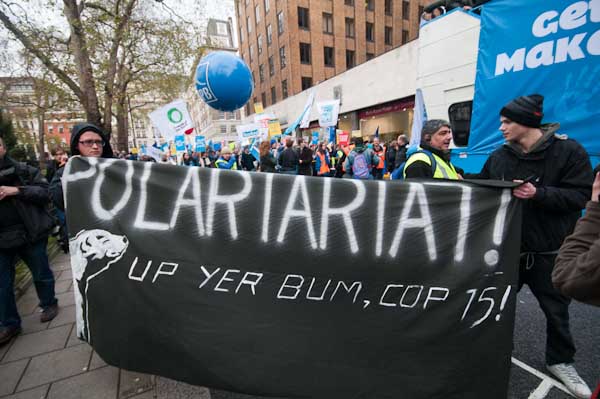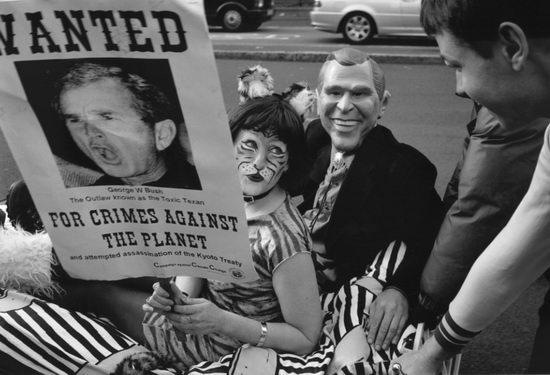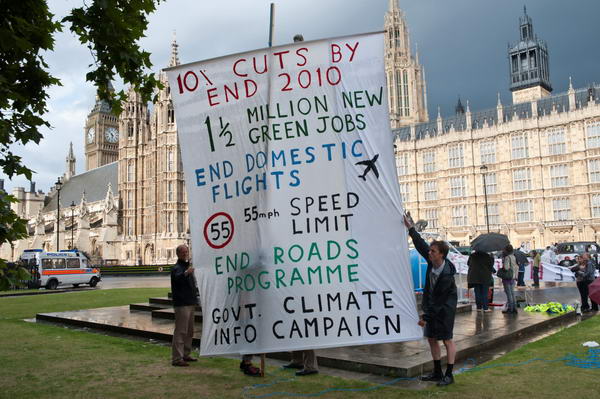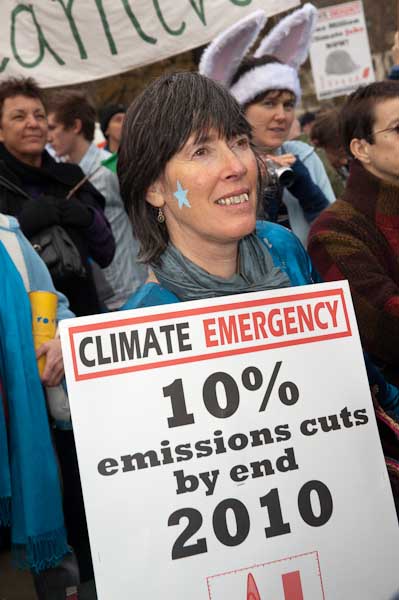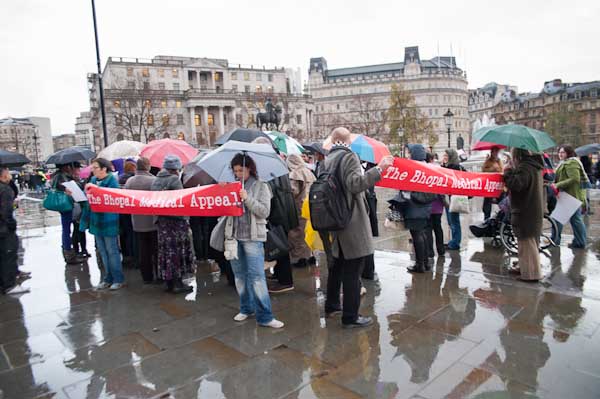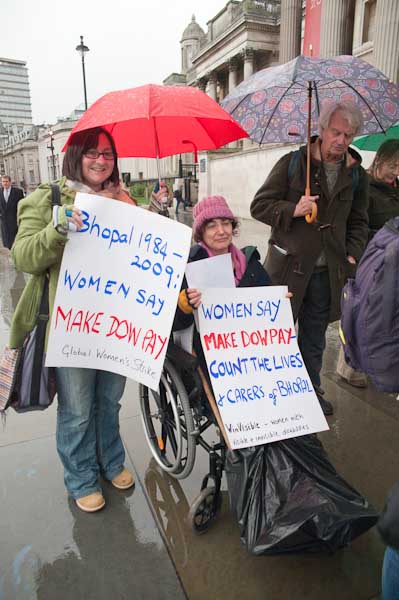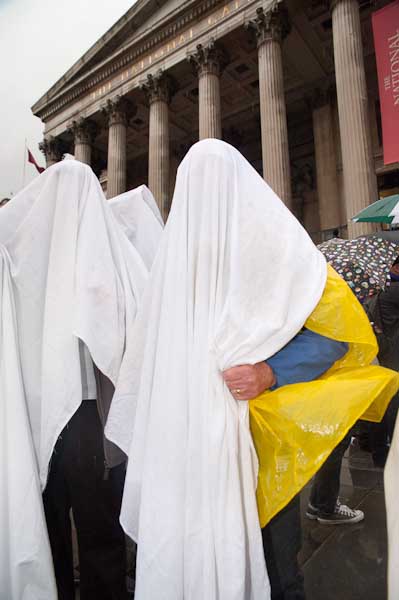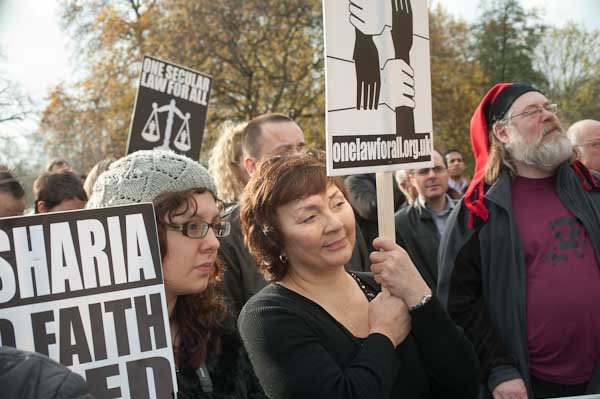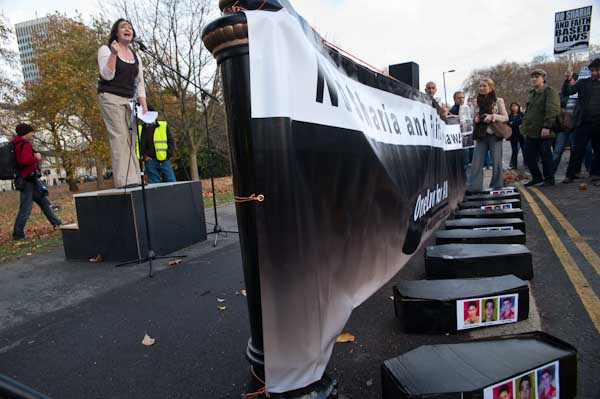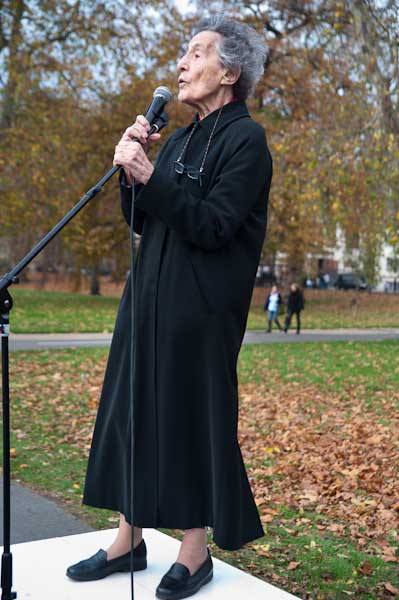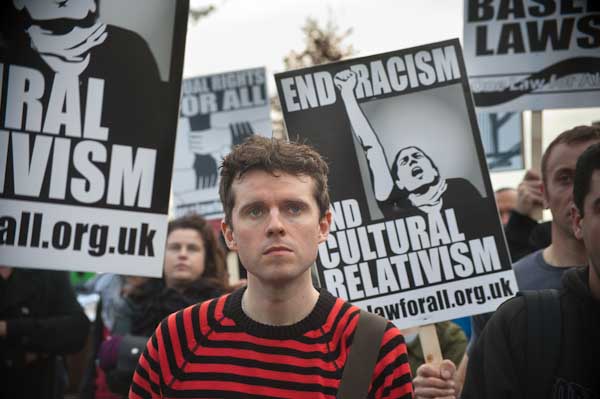It was a full house at the Photographers’ Gallery last night for Graham Harrison‘s talk on ‘The Unseen Bert Hardy’, and one from which I’m sure every member of the illustrious audience – including quite a few who had known the man – went away with their view of Bert Hardy changed, and wanting to see more of his unknown and unpublished work.
I think we all have a view of him – that perhaps comes in part from how he used to talk about his work – which sees him metaphorically as a skilled British craftsman in blue dungarees, a wooden folding two foot rule in his top left pocket and a pencil tucked behind his right ear – as well of course as a Contax around his neck, and the kind of attacking attitude you’d expect from a schooling in a gym on the Old Kent Road. Of course he was born a working class lad south of the river, just off the Blackfriars Road (he got a blue plaque there last year and of course has a seat in St Brides), he was a highly skilled technician – and as many of his published pictures and some of the new work last night attest, had both a great feeling for light and also the technical ability to use it, particularly what in the old days used to be called “contre-jour“. But he was more than that.
Part of his reputation comes from the comparison with Bill Brandt, and the famed Gorbals assignment in particular. It’s perhaps hard to understand why Picture Post (PP) sent Brandt on the job in the first place, because his rather splendid de Chirico-like views or the tenements are perhaps exactly what you would have expected of the man.
When PP panicked on seeing his pictures, they sent Bert to rescue the story. Or rather, as Graham Harrison pointed out, they sent the ‘two Berts‘, photographer Bert Hardy and writer Bert Lloyd. Lloyd, another south Londoner, had started collecting folk songs while working in Australia in the 1920, joined the Communist party in the 1930s and worked – often with Hardy – on stories for PP from around 1945-50, and was one of the pioneers of the folk revival, presenting folk as a live working class from rather than the effete activity of largely upper-class folk collectors. They worked together, “Lloyd engaged the subjects in conversation and Hardy photographed them” as it says below the poster for a show of Hardy’s work from Tiger Bay there fifty-one years after they were taken in 2001. The page also raises the question:
For generations, people in Tiger Bay have objected to how they have been represented by photographers, writers, journalists, social scientists and others. But they like Bert Hardys photographs of themselves and their community. Why is this so? What sort of documentary practice is this that local people find so alluring?
I’d like to think the answer is that it is one that is made by people like them who get down beside them and work with them, something that has very much to do with both Berts.
Another of the well-known projects on which they worked together was : The Elephant and the Castle, and you can still see 25 pictures from this – including quite a few not published at the time at the James Hyman site.
Back to the Gorbals. Through the party – and perhaps also through folk-song, though the two things were closely linked – Lloyd had a contact in the Gorbals, a Mr Mac-something (I was making notes in the dark and my handwriting is worse than Gordon Brown’s) who made the job considerably easier by taking them to the right places and to meet the right people.
Over his 16 years at the PP as its Chief Photographer, Bert Hardy shot over 800 stories and over 500 were published. 23 of the made the cover. He didn’t waste film and there were very few failures. When he was able to develop his own films, they were finer grained and I think sharper than those from the lab (and of course after PP, he went on to set up Grove Hardy, and there were several photographers present who had used them to print their work – including David Hoffman and Homer Sykes – as well as one of the printers who used to work there.)
Perhaps what came most clearly from the “unseen” work was a suggestion of a very much more complex photographer. As well as the warmth of vision, the humanity, the empathy with his subjects, there was an appreciation of the surreal – an aeroplane flying across the wallpaper behind a group at airforce training, a long row of people in lice-proof calico suits being sprayed, a half-naked yoga pose in front of so very conventionally dressed ladies and men on a line of sofas and chairs along the wall behind.
The talk was recorded, and I hope will be made available somewhere, either on Harrison’s Photo Histories web site or on the Photographers’ Gallery site. I hope what we have seen is just a first instalment and that Harrison will be able to go on and look at the rest of Hardy’s work in the archive to produce an exhibition and a book.
Although we’ve seen a few shows in recent years from PP photographers, there is still I think a lot to be found in the archive. When I tried to write about some of the other photographers who worked there it was hard to find their work for PP anywhere on the web as examples, and for most there were relatively few – and usually the same few – in publication. The Getty site isn’t that friendly and work is hard to find much by Felix Man for example. Unfortunately for copyright reasons what I did write on some of the others – Bill Brandt, Bert Hardy, Thurston Hopkins & Kurt Hutton is no longer on-line.
It’s perhaps time for a major show at one of the big London galleries to re-evaluate the work of all the PP photographers – including the stuff that only made it as far as the archive. It would be a great contribution to London’s increasingly successful photo festival, Photomonth, in a couple of year’s time. Or perhaps a season of shows at a smaller venue such as the Photographers Gallery? One small thought that comes to me is a tenuous Olympic connection – surely PP will have covered the 1948 games here?
